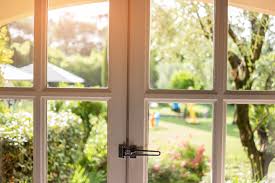Owning a home is rewarding but comes with responsibilities, like maintaining your roof. A well-kept roof protects from the elements, boosts aesthetic appeal, and increases home value. This blog post covers key considerations for roof replacement to help keep your home safe and secure.
Signs Your Roof Needs Replacement
Leaks and Water Damage
One of the most obvious signs your roof needs replacement is the presence of leaks or water stains on your ceilings. If you notice water dripping during rainstorms or dark spots on your walls, it may indicate that your roof is failing. Leaks can lead to serious issues such as mold growth and structural damage, which can be costly to repair. Addressing these signs early can save you money in the long run.
Age of the Roof
The age of your roof plays a crucial role in determining whether it needs replacing. Most roofs have a lifespan of 20 to 25 years, depending on the materials used. If your roof is approaching this age, it’s wise to have it inspected, even if you’re not currently experiencing any noticeable problems. Regular inspections can help identify potential issues before they develop into major concerns.
Missing or Damaged Shingles
Another indicator that your roof may need replacement is the appearance of missing or damaged shingles. If you find shingles in your yard after a storm or notice granules in your gutters, it may be time to consider a new roof. Damaged shingles compromise the integrity of your roof, reducing its ability to withstand harsh weather conditions and protect your home.
Understanding the Process
Initial Inspection
When you decide to replace your roof, the first step is to schedule an inspection with a qualified contractor. During this visit, they will assess the current state of your roof, identifying issues such as leaks, structural damage, or inadequate ventilation. This evaluation is crucial, as it helps determine the scope of work needed and allows for an accurate estimate of costs.
Preparation for Replacement
Once you’ve decided to move forward with the replacement, the contractor will discuss the necessary preparations. This may include moving outdoor furniture, covering plants, and securing your property from debris. Clear communication with your contractor will ensure a smooth process and minimize disruptions to your daily life.
Final Clean-Up
After the new roof is installed, the final step is clean-up. A reputable contractor will ensure that all debris from the old roof is removed, leaving your property tidy. They should also inspect the work to ensure everything meets safety and quality standards. Taking these steps helps you feel confident about your new roof and protects your home for years to come.
Selecting the Right Material
Popular Roofing Materials
When it comes to roofing materials, there are several options to choose from, each with its pros and cons. Asphalt shingles are popular due to their affordability and ease of installation. However, metal roofing like those famous in Utah offers durability and longevity, while slate roofs provide an elegant aesthetic but come with a higher price tag. Understanding the differences between these materials can help you make an informed decision.
Climate Considerations
Your local climate plays a significant role in determining the best roofing material for your home. For instance, if you live in an area with heavy snowfall, a steep-sloped roof made of metal may be ideal, as it allows snow to slide off easily. Conversely, if you reside in a hot climate, consider reflective shingles that can help reduce cooling costs. Evaluating how different materials perform in your specific climate is essential for making the right choice.
Aesthetics and Neighborhood Guidelines
While practicality is important, aesthetics must not be overlooked. The right roofing material should complement your home’s architectural style and align with neighborhood guidelines. Many homeowners associations (HOAs) have specific regulations regarding roofing materials and colors. Researching these requirements ensures your new roof enhances your home’s curb appeal while adhering to local standards.
Hiring the Right Contractor
Research and Recommendations
Finding a reputable contractor is crucial for a successful roof replacement. Start by asking friends, family, or neighbors for recommendations. Checking online reviews and ratings can also provide insight into a contractor’s reputation. Look for professionals with experience in roofing projects similar to yours, as their expertise can make a difference in the final outcome.
Licensing and Insurance
Before hiring a contractor, verify that they hold the appropriate licenses and insurance. A licensed contractor demonstrates that they meet industry standards and regulations. Insurance protects you from liability in case of accidents or damage during the project. Request proof of both licensing and insurance before making your decision.
Getting Multiple Quotes
To ensure you receive a fair price, obtain quotes from at least three different contractors. This will give you a clearer understanding of market rates and help you identify any discrepancies in pricing. When reviewing quotes, consider factors beyond just cost, such as the quality of materials and the contractor’s experience. Making a well-rounded decision will lead to a more satisfying experience.
Budgeting and Financing
Setting a Realistic Budget
Budgeting for a roof replacement involves more than just the cost of materials and labor. You should factor in additional expenses such as disposal fees, permits, and unexpected repairs that may arise during the project. Understanding these costs upfront will help you create a budget that accurately reflects the total investment needed.
Understanding Cost Factors
Several factors can influence roofing costs, including the size of your roof, the chosen materials, and the complexity of the installation. Larger roofs or those with intricate designs will naturally cost more due to the increased labor and materials required. Additionally, regional pricing variations may affect overall costs, so be sure to compare quotes from local contractors.
Exploring Financing Options
If the cost of a roof replacement feels overwhelming, consider exploring financing options. Many contractors offer payment plans or financing through third-party lenders. Additionally, some local governments or non-profit organizations provide grants or low-interest loans for home repairs. Investigating these options can help you find financial support to make your roofing project more manageable.
The Replacement Day
What to Expect
On the day of replacement, expect your contractor to arrive early with their team and equipment. They’ll begin by removing the old roofing material, which can be noisy and messy. Communicate with your contractor about any specific concerns you have regarding the process, and ensure they keep you informed throughout the day.
Preparing Your Home
Before the crew arrives, take some time to prepare your home. Move vehicles away from the work area and cover outdoor furniture or plants to protect them from debris. Notify your family members or pets to stay away from the work zone for safety. Proper preparation helps create a smoother process and minimizes disruptions to your daily routine.
Staying Informed
During the roof replacement, maintain open communication with your contractor. Don’t hesitate to ask questions or request updates on the progress. Being informed will give you peace of mind and help ensure that the finished product meets your expectations.
Maintenance After Replacement
Regular Inspections
Once your new roof is installed, regular maintenance is key to extending its lifespan. Schedule inspections at least once a year, checking for signs of wear and tear, such as cracked shingles or accumulated debris. Early detection of potential issues can save you from costly repairs down the line.
Cleaning and Care
Keeping your roof clean is essential for its longevity. Remove leaves, branches, and other debris regularly to prevent water pooling and potential damage. Additionally, consider hiring a professional to conduct deep cleans or gutter maintenance at least once every few years. These simple upkeep tasks can significantly prolong the life of your new roof.
Knowing When to Call a Professional
While regular inspections and cleaning are important, knowing when to call a professional is equally crucial. If you notice any signs of leaks, structural damage, or significant wear and tear, do not hesitate to reach out to your contractor. Addressing issues promptly helps protect your home and ensures your investment remains secure.
Conclusion
Taking proactive steps to protect your home starts with understanding the importance of a well-maintained roof. By recognizing the signs that signal a need for replacement, understanding the process, and making informed decisions about materials and contractors, you can secure your home against future threats.






